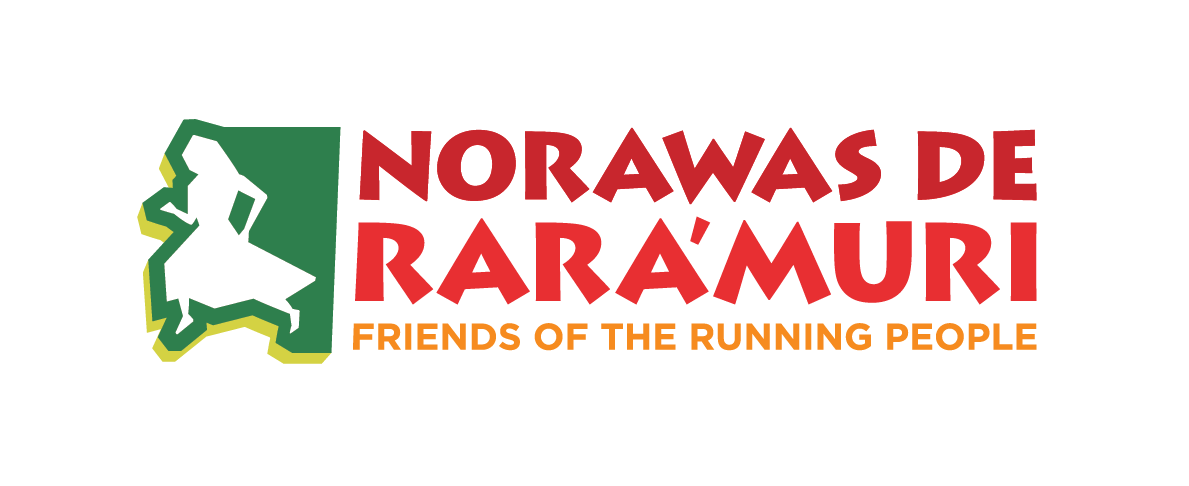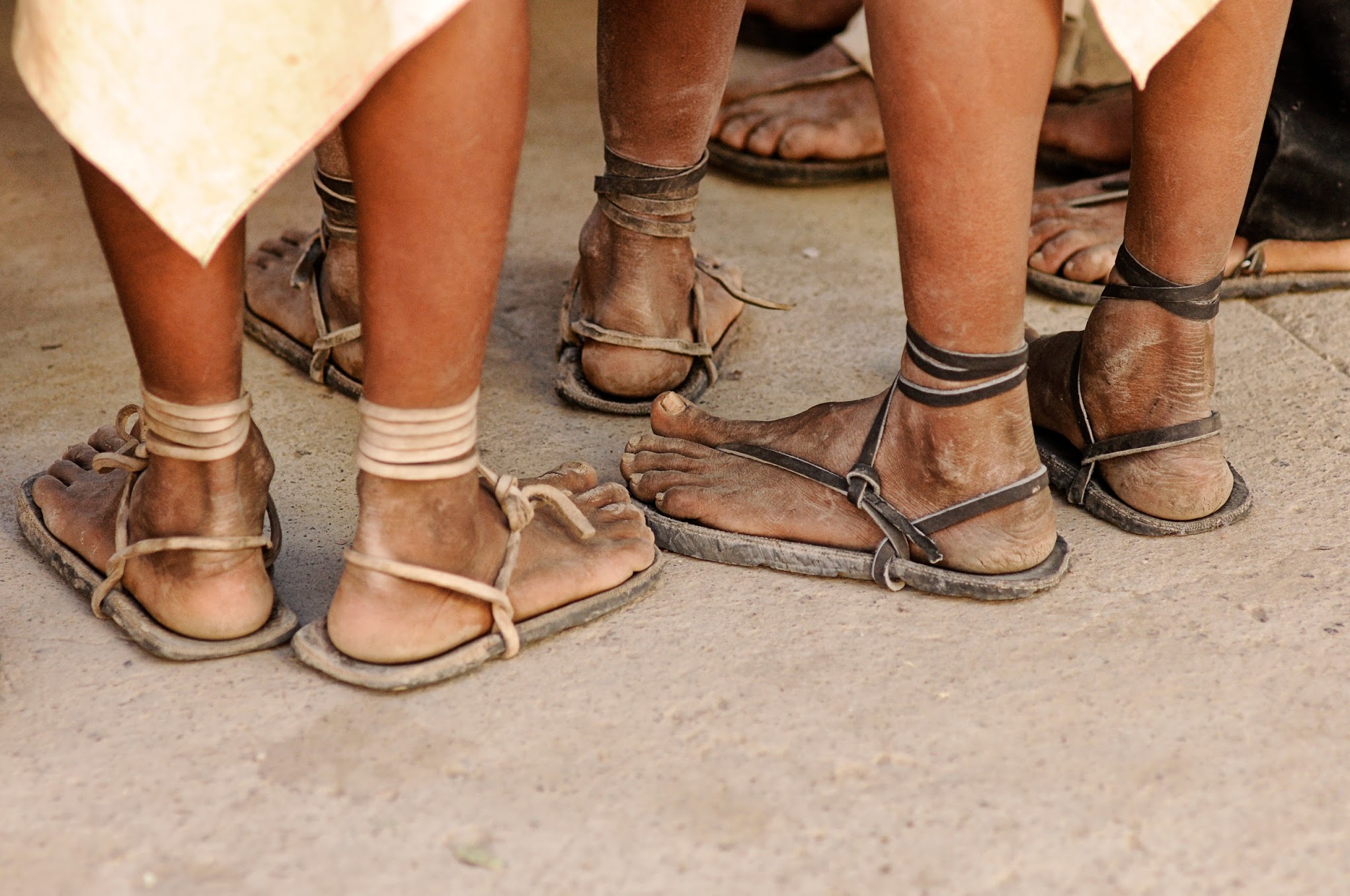We got into the remote traditional village of Huisuchi after
nightfall, on the night before the big race. The road to get there
was washed out and terrible, leaving rough patches of exposed rock
and leading to several dangerous river crossings. Three tired
gringos, board members Maria and Flint and fellow Mas Loco Patrick
Sweeney, were welcomed into a Raramuri house where women were busy
cooking and making coffee. Outside, the men chatted about the coming
ball race, who was their favorite team to wager on and which champion
would lead their group to victory.
We sat down at the table while the women hand-patted delicious
blue corn tortillas and served us a warm vegetable stew. I had never
been able to be around Raramuri women before; every time I tried,
they would shy away quickly or hide their face with their hands. This
time, however, something had changed. Was it because of the
excitement about the race? Or was it a sign that we, after several
trips down to the Barrancas now, were finally starting to get
accepted? This was all very exciting.
After enjoying our meal, we joined our friends around the fire.
Mama Tita's son, Lupe, was among them and very happy to explain us
the ins and outs of Rarajipare. He was soon joined by Raramuri
champion Silvino and my friend Javier, who is one of the last running
Raramuri of Urique. Getting re-acquainted was easy; he clearly
remembered our runs together with Micah, up and down Los Alisos
almost two years ago. We shook hands, smiled and exchanged good
wishes. Then we all sat around the fire in the biting cold of the
high Sierra night, and enjoyed the warmth and presence of each
other.
The morning came quickly. We all gathered in the most
robust 4x4 trucks and headed out of the village on an even rougher
trail, made slippery by recent rainfall. We got to the race site
early enough to participate in all the pre-race excitement; the
carving of the sticks used for the race, the soaking of the wooden
balls, the preparation of the food and, of course, the bets.
 |
Maria Walton preparing two
of the donated bags of clothing |
We were bringing a lot of donations in material; warm clothing,
running gear, hydration bottles, shoes, socks, blankets and toys for
the kids. As part of Norawas' values, we try not to present those as
a handout, so we can all look at each other eye-to-eye. The bets
represented the ideal way for us to distribute some of our material;
each team has a pile of wagered things, ranging from money to
household items to farm animals. We would simply put our material in
the pile, and of course not collect any winnings after the event.
We made sure that this behavior wouldn't raise any eyebrows. On
the contrary; the Raramuri were very happy that we partook in the
excitement of the wagers and they made sure to list what we had
brought in a little notebook. From the instant we arrived, we were so
broadly welcomed that it caught me off-guard; usually, whenever we
are in the presence of Raramuri People, we simply hang around,
looking down at the ground and nodding softly, exchanging only small
gestures and quick looks. Now, we were in the middle of everyone,
eating from the same cauldron of pozole, talking to the runners and
playing around with the kids.
 |
| The kids loved Patrick Sweeney's Frisbees |
The biggest hit, on that front,
was Patrick Sweeney and his Frisbees; he had brought a full case of
brightly-colored discs, which he started throwing back-and-forth with
the kids. They were shrieking with excitement, laughing and running
around, chasing the flying toys. Before too long, groups of Raramuri
kids all over the plain were playing with their Frisbees and more
joyful youngster were chasing around Sweeney to either play catch
with him or get another disc for some of their little friends.
As the morning warmed up, we all got prepared for the Ariweta, the
women's hoop race. We also wagered materials and some money on that
event, which added to the excitement. Two groups of girls gathered
around an imaginary line, got ready and shot their hoops straight
ahead, darting forward at high speed. They had decided on an 8-lap
race around a 4k loop, which put the crowd constantly in the middle
of the action.
 |
Catalina and Maria, two of the Ariweta players,
receiving brand new shoes |
It was amazing to see the girls race, and even
more so when Sweeney and I got invited to run among them, cheering and
clapping. Sweeney tagged along with the leading girl, a very fast
teenager named Maria, and I hung back a little ways with young
Raramuri champion Catalina, who was saving her energy for later on.
Even at her chill pace, I had a very hard time keeping up, which made
her smile shyly. I think she even waited for me a little bit when I
was lagging too much behind.
While the girls were still competing, the men gathered, negotiated
the last rules for their race and got ready to start. The teams were
much bigger than I expected, with about 24 runners on each side. Both
teams had a Shaman carefully choose their ball, then dip some sacred
weeds in water and splash the runners' legs in a blessing both
intended to make them stronger and to keep them safe from the other
team's spells.
They took off at blazing speeds, hooting and
hollering. For someone used to see them run very quietly on the
trails of Ultra Maraton Caballo Blanco, I was very surprised to see
them so extroverted and noisy; the Rarajipare is clearly the ultimate
Raramuri party!
At the end of each lap, the teams stopped at the side of the trail
in different spots where the women would serve them pinole, hot broth
and water to keep fueled. While that was happening, the Shaman would
go in circles around the runners, splashing their legs and providing
secret magic words of fortitude and protection. Then, as quickly as
they had stopped, the men would go at it again, surrounded by their
supporters, both male and female.
 |
Arnulfo Quimare, sporting
his Aravaipa hat and scarf |
The men ran on all day, looping around the same course. Patrick
Sweeney and Maria both joined in at various points, running in tune
with our friends. It was a beautiful sight, and the true joy of
running was shared once again, bridged between peoples. This is what
Norawas is all about; celebrating a culture that we also share and
joining in as equals, as one.
The Rarajipare continued well into the night, with both teams and
their supporters lighting the way with wooden torches. Seeing the
orange glow of each group in the night was a unique experience, and
one of the most beautiful things I had ever seen. Being there at that
moment felt right, and sharing this event with our friends, on their
home turf, was both an honor and a privilege.
At the end of it
all, we had not only shown deep respect and interest through our
presence; we had also brought Korima and the good will of Running
People from many places in the world, in the form of wagers and in
prizes for the winners as well as the losers.
Norawas
distributed bags of warm clothing for men and women, over 20
hand-made blankets to families and children, technical clothing for
Raramuri runners who want to use it, shoes, socks and numerous
colorful Frisbees to the cheerful kids of the high Sierra. The
winning Ariweta team was awarded 2 food vouchers per runner, 14 in
total. The winning Rarajipare team went home with 24 vouchers. The
losing team's last runner, Florencio, who had single-handedly tried
to keep his team in the race, was awarded 2 vouchers for his amazing
effort. All winning runners were also offered Buffs, caps, visors and
wristbands from our generous friends at Aravaipa Running Company, who
generated a lot of genuine, happy smiles.
It was a good day for The Running People, and an even greater day
for Norawas.
Kuira Ba!















